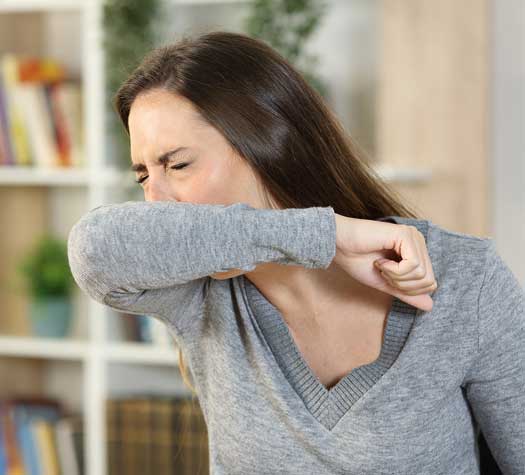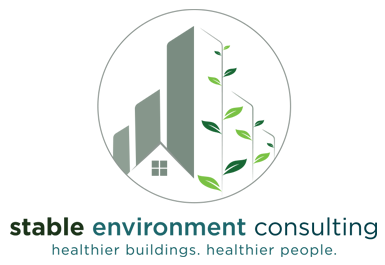Improve Indoor Air Quality
Align With Nature
Breathing clean air is critical to good health, brain function, blood pressure, stress management and host of other health benefits. It’s vital and since we spend over 90% of our time indoors, it seems reasonable to ensure our indoor air is healthy, but it’s not! The EPA reports that indoor air is 2x to 5x more polluted than outdoors. Let’s work to improve indoor air where you live, work and play.

Certified Professional
Indoor Environmental & Building Consulting Services
EMF Protection • Improve Indoor Air Quality •
Healthier Construction (New Builds, Renovations & Remodels) • Workshops • Training • Speaking
Nature is the Gold Standard
Eliminate Indoor Toxins
Indoor Air Pollution
Are the buildings your live, work and play in making you sick? Do you have frequent headaches? Do you know about Sick Building Syndrome? From mild symptoms to more severe illnesses, indoor air pollution is a major health hazard. Check out the indoor air sources and common health symptoms uncovered from over 20 years of research on invisible health hazards.

Typical Sources
- Building Envelope
- Air Ventilation
- Heavy Mechanical Equipment (HVAC, A/C, Water Heater)
- Temperature & Humidity
- Lighting, Color & Sound
- Air Particulates
- Radon
- Water, Sewer & Gas Supply Systems
- Mold / Moisture Concerns
- Cleaning & Laundry Products
- Household Furnishing
- Water Quality
- …and much more
Health Symptoms
- Congestion / Runny Nose
- Allergies / Eye Irritation
- Fatigued
- Brain Fog / Memory Loss
- Gastrointestinal (GI) Problems
- Irritability
- Depression
- Headaches / Vision Issues
- Congestion
- Asthma
- Sleep Problems
- Joint Issues or Tingling
- Facial redness
- Vertigo / Nausea
- …and many more
Improve Indoor Air Services
Buildings are a system, much like the human body. The different components that make up the building system operate in correlation with each other to create the indoor environments. We identify and where applicable, measure pollutants from the building’s air, water, energy and interior circulations, as well as any system failures. We offer Good-Better-Best remediation options to improve indoor air for healthier buildings and healthier people.
Residential
For single family homes, duplexes, town homes, condos and apartments, as well as tiny houses, RVs, ADUs, sprinter vans or other residential buildings.
- Complete Indoor Air Assessment
- Interior Furnishings & Finishes
- Key Systems Evaluation (HVAC)
- Indoor Temperature and Humidity Evaluation
- Indoor Air Ventilation Evaluation
- Particulate Matter Evaluation
- Unwanted Gases Evaluation
- Cleaning & Laundry Products Evaluation
- Water / Moisture Damage Evaluation
- Mold Testing, if warranted
- Water Quality Testing, if desired
- Building Product Evaluations
Commercial
For businesses in office buildings, medical facilities, multi-unit apartment complexes, hotels, churches, schools or other commercial buildings.
- Complete Indoor Air Assessment
- Interior Furnishings & Finishes
- Key Systems Evaluation (HVAC)
- Indoor Temperature and Humidity Evaluation
- Indoor Air Ventilation Evaluation
- Particulate Matter Evaluation
- Water / Moisture Damage Evaluation
- Building Product Evaluations
The
Assessment
Process
Discovery
Let’s get on the same page!
- We’ll start by talking about your indoor air concerns, interests, and questions, as well as what you’d like to accomplish.
- From there, we go over current health symptoms or preexisting health conditions, if any, and what you’ve tried.
- Next, Lynne will propose an Indoor Air Quality (IAQ) Assessment for you to review and decide what you’d like to do.
During this step, Lynne will educate you on how the building systems work together and some easy tips for improving indoor air quality.
Assessment
Using the 33-year proven Building Biology Institute’s (BBI) building science and physics approach, Lynne gets to work on:
- assessing your space (i.e., building) by identifying and recording observational findings, and testing indoor air, as necessary;
- comparing those findings and measurements against Building Biology’s No-Slight-Severe-Extreme Concern Health Guidelines that are far lower than big regulatory agencies like the EPA; and
- indicating what needs No-Recommended-Definite-Immediate Action, so you can easily prioritize.
During the Assessment step, education and tips continue.
Findings & Suggestions
In this final step, Lynne makes a determination of up to three tiered Good-Better-Best Options for improving indoor air, as best as possible. These suggestions are done verbally and/or in a handwritten report packed with a hefty Appendix of Information and Resources. Need a more formal report? Just ask.
You choose what to implement or not, and to what degree and when. If you need assistance from Lynne in implementing any suggestions, that may be explored here, or at a later date – call anytime.
